 |
HEALTH
& SAFETY
As
part of any proposal we submit Health and Safety is a major
criteria. All desks, seats, cupboards and screens conform
to the latest regulations and our designs meet the latest
safety guidelines.
Health
& Safety Commission - workplace health, safety and welfare
APPROVED CODE OF PRACTICE
Room
dimensions and space
-
Every room where persons work shall have sufficient floor
area, height and unoccupied space for purposes of health,
safety and welfare.
- It
shall be sufficient compliance with this regulation in
a workplace which is not a new workplace, a modification,
an extension or a conversion and which, , immediately
before this regulation came into force in respect of it,
was subject to the provisions of the Factories Act 1961,
if the workplace does not contravene the provisions of
Part 1of Schedule 1.
Minimum
space
76
Workrooms should have enough free space to allow people
to get to and from workstations and to move within the room,
with ease. The number of people who may work in any particular
room at any one time will depend not only on the size of
the room, but on the space taken up by the furniture, fittings,
equipment, and on the layout of the room. Workrooms, except
those where people only work for short periods of time,
should be sufficient height (from floor to ceiling) over
most of the room to enable safe access to workstations.
In older buildings with obstructions such as low beams the
obstructions should be clearly marked.
77
The total volume of the room, when empty, divided by the
number of people normally working in it should be at least
11 cubic metres. In making these calculations a room or
part of a room which is more than 3.0m high should be counted
at 3.0m high. The figure of 11 cubic metres per person is
a minimum and may be insufficient if, for example, much
of the room is taken up by furniture etc.
78
The figure of 11 cubic metres referred to in paragraph 77
does not apply to:
a)
Retail sales kiosks, attendants' shelters, machine control
cabs or similar structures, where space is necessarily
limited; or
b)
Rooms being used for lectures, meetings or similar purposes.
79
In a typical room, where the ceiling is 2.4m high, a floor
area of 4.6 square metres (for example 2.0 x 2.3m)
will be needed to provide a space of 11 cubic metres. Where
the ceiling is 3.0m high or higher the minimum floor area
will be 3.7 square metres (for example 2.0 x 1.85m).
(These floor areas are only for illistrative purposes and
are approximate).
80
The floor space per person indicated in paragraphs 77 and
79 will not always give sufficient unoccupied space,
as required by the Regulations. Rooms may need to be larger,
or to have fewer people working in them, than indicated
in those paragraphs, depending on such factors as the contents
and layout of the room and the nature of the work. Where
space is limited careful planning of the workplace is particularly
important.
|
|
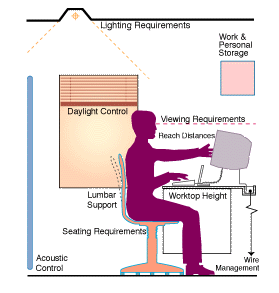 Click
on the diagram to see enlarged version. Click
on the diagram to see enlarged version.
Elements
of the workplace, including "Lighting at work".
Work
requiring perception of details - offices - avoid visual fatigue;
adequate for safety purposes.
Average
LUX = 200
Minimum
LUX = 100
(LUX
= lumens per square metre)
|
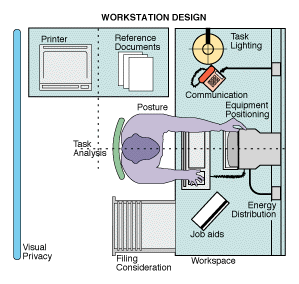 Elements
of the workstation.. Elements
of the workstation.. |
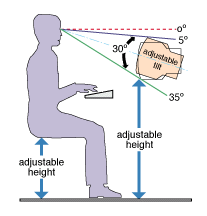 Considerations
for the VDU Operator. Considerations
for the VDU Operator.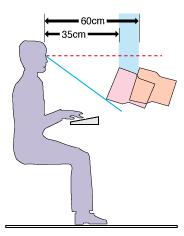 |
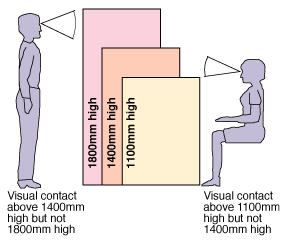 Screens
that can create different levels of privacy. Screens
that can create different levels of privacy. |
|
To
Glossary
 To
Contact Us To
Contact Us
Should
you have any comments about our website, please e-mail Info@bentleyinteriors.co.uk
©
2003 Bentley Office Interiors Ltd
|
|





